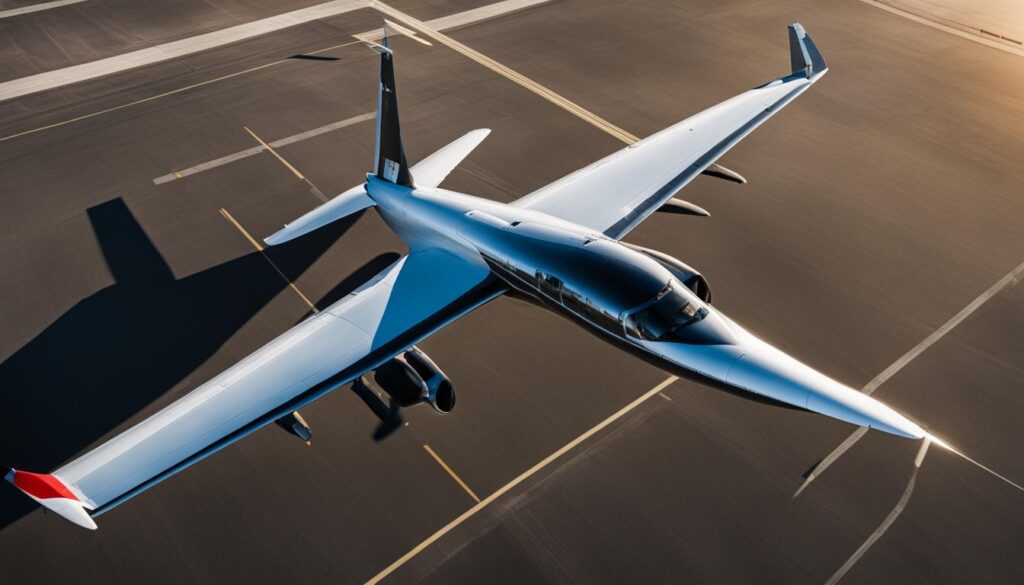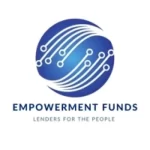Are you ready to take your business to new heights? As the demand for private aviation continues to soar, more and more entrepreneurs are looking for aircraft financing alternatives to turn their dreams into a reality. Whether you’re a high-net-worth individual or a corporate executive, finding the right aviation finance solution is crucial for taking your business to the skies.
At Empowerment Funds, we understand that each business is unique and requires tailored financial solutions. That’s why we offer a wide range of aircraft lending options and funding choices to suit your needs. From traditional loans to asset-based loans and aircraft leases, we have the expertise and resources to help you make the right financing strategy for your business.
Curious about the alternatives available to you? Join me as we explore the world of aircraft financing and discover the investment options that can propel your business forward.
Key Takeaways:
- Aircraft financing is essential for individuals and businesses looking to enter the world of aviation or expand their aircraft fleet.
- Traditional loans, asset-based loans, and aircraft leases are alternatives to consider, each with its own advantages and considerations.
- Negotiating favorable lease terms and effectively managing your lease portfolio are key to successful aircraft financing.
- Stay informed about market trends and developments to make informed decisions about your aircraft financing strategy.
- Empowerment Funds offers tailored financial solutions for entrepreneurs looking to grow their businesses through aircraft financing alternatives.
Traditional Loans
When it comes to financing your aircraft purchase, traditional loans are a familiar option that mimics other large purchases like houses or cars. These loans provide a straightforward approach to aircraft financing, giving you the flexibility to choose between fixed or floating interest rates.
With fixed rate loans, you can lock in a specific interest rate for the entire loan duration, providing stability and predictability in your monthly payments. On the other hand, floating rate loans offer interest rates that fluctuate with market conditions, potentially providing an advantage if rates decrease.
One option to consider when opting for a traditional loan is an interest rate swap. This allows you to exchange your current loan’s interest rate for a different rate, either to lock in a rate or benefit from early payoff. It can be a useful tool to manage interest rate risk and align the loan with your financial goals.
Traditional loans come with various term options, ranging from as short as 30 months to as long as 120 months. However, it’s important to note that longer loan terms typically result in higher interest rates. Shorter terms may offer lower interest rates, but they could also mean higher monthly payments.
With traditional loans, you have the flexibility to choose the loan term that aligns with your financial situation and goals. Whether you prefer a shorter payback period or a longer term to spread out your payments, there are options available that suit your needs.
| Loan Type | Interest Rate | Loan Term |
|---|---|---|
| Fixed Rate Loan | 3.25% | 60 months |
| Floating Rate Loan | 2.75% | 120 months |
| Interest Rate Swap | N/A | N/A |
As you navigate through the traditional loan options, it’s essential to weigh the benefits and considerations based on your financial circumstances. Be sure to carefully analyze the interest rates, terms, and overall cost of the loan to make an informed decision that aligns with your aircraft financing needs.
Asset-Based Loans
Empowerment Funds understands the unique financing needs of individuals and businesses in the aviation industry. That’s why we offer asset-based loans tailored specifically for aircraft ownership. With our asset-based loans, you can secure the funding you need without the hassle of financial disclosures or extensive personal guarantees.
Our asset-based loans provide a non-recourse financing option, meaning that in the event of default, the lender can only repossess the aircraft but cannot seek further compensation from you. This limited personal guarantee ensures that your personal assets remain protected.
One of the key benefits of our asset-based loans is the absence of stringent financial disclosures. We understand that confidentiality is crucial, especially for high-net-worth individuals and businesses. With our asset-based loans, you can finance your aircraft without having to divulge detailed financial information, ensuring your privacy and maintaining your competitive edge.
Our asset-based loans are particularly advantageous for businesses with bonding requirements or limitations on debt or guarantees. Avail of the financing you need without compromising your existing commitments or jeopardizing future opportunities.
Ready to take the next step towards aircraft ownership? Contact Empowerment Funds today and explore our asset-based loan options. Our dedicated team of experts is here to guide you through the process and help you secure the financing you need to soar to new heights.
| Benefits of Asset-Based Loans | Features |
|---|---|
| No Financial Disclosures | Secure financing without revealing detailed financial information |
| Limited Personal Guarantees | Protect your personal assets with minimal guarantees |
| Non-Recourse Financing | In the event of default, the lender can only repossess the aircraft |
Unlock the potential of asset-based loans with Empowerment Funds. Experience hassle-free financing and confidential transactions. Reach out to us today and let us help you achieve your aircraft ownership dreams.
Aircraft Leases
Leasing an aircraft can be a smart alternative to purchasing, providing a range of benefits for businesses and individuals. By opting for an aircraft lease, you can take advantage of cash flow considerations, tax advantages, sales tax savings, and favorable off-balance sheet treatment. Whether you’re looking for flexibility or long-term cost savings, aircraft leases offer a versatile solution tailored to your needs.
There are two main types of aircraft leases: non-tax leases and tax leases. Non-tax leases allow the lessee to own the aircraft for tax purposes, providing potential tax benefits such as depreciation. On the other hand, tax leases are more advantageous for lessors, who can leverage tax benefits while leasing the asset to the lessees.
One of the key advantages of aircraft leases is the ability to enjoy favorable interest rates. This can help reduce your overall financing costs and make aircraft ownership more affordable in the long run. Additionally, leases offer greater flexibility in terms of aircraft selection, allowing you to choose the make and model that best fits your specific requirements.
When it comes to accounting treatment, aircraft leases offer the advantage of off-balance sheet treatment, which can be beneficial for businesses aiming to maintain a healthy debt-to-equity ratio. This treatment allows the leased aircraft to be excluded from the lessee’s balance sheet, providing a more favorable financial position.
Non-Tax Leases vs. Tax Leases: Making the Right Choice
Choosing between non-tax leases and tax leases depends on various factors, including your intended use of the aircraft and your appetite for tax benefits. Non-tax leases are ideal for those who want to own the asset for tax purposes and can take advantage of tax benefits like depreciation. Conversely, tax leases are more suitable for lessors seeking to benefit from the tax advantages of owning and leasing the aircraft.
It’s crucial to consider your specific financial goals and consult with aviation finance experts who can guide you in selecting the right lease structure. They can help analyze your unique circumstances and advise on the lease that aligns most effectively with your business objectives and tax planning strategies.
In conclusion, aircraft leases offer a range of benefits, including cash flow considerations, tax advantages, sales tax savings, and off-balance sheet treatment. By carefully evaluating your needs and consulting with experienced professionals, you can take advantage of favorable interest rates and find the lease structure that best suits your business goals. Whether you choose a non-tax or tax lease, leasing an aircraft can be a financially advantageous and flexible solution for your aviation needs.

Comparing Non-Tax Leases and Tax Leases
| Aspect | Non-Tax Leases | Tax Leases |
|---|---|---|
| Tax Benefits | Lessees can own the asset for tax purposes | Lessors enjoy tax advantages like depreciation |
| Off-Balance Sheet Treatment | Excluded from the lessee’s balance sheet | Excluded from the lessor’s balance sheet |
| Flexibility | Greater aircraft selection options | Greater financing flexibility for lessors |
| Interest Rates | Favorable interest rates for lessees | Potential interest income for lessors |
Choosing the Right Leasing Type
When it comes to aircraft leasing, there are two main types to consider: operating leases and finance leases. Each option comes with its own set of advantages and considerations that can significantly impact your leasing experience.
Operating Leases
Operating leases are short-term contracts that offer flexibility to lessees. With an operating lease, you can enjoy the benefits of using an aircraft without taking on the risks and responsibilities associated with ownership. While this leasing type may come with higher rental fees, it provides the freedom to upgrade or switch to a different aircraft when lease agreements end.
Finance Leases
Finance leases, on the other hand, transfer ownership and risks to the lessee. These leases offer more control and customization options, allowing you to treat the leased aircraft as if it were your own. While finance leases provide greater control, they typically come with higher initial costs and interest rates. However, they can be a good option for those seeking long-term aircraft usage and investment opportunities.
When choosing the right leasing type, it’s essential to evaluate various factors. Consider the lease duration that aligns with your needs and usage requirements. Assess the rental rate to ensure it fits within your budget constraints. Understand the maintenance and insurance responsibilities associated with the lease, as these may vary between operating and finance leases. Additionally, carefully review the delivery and return conditions, end-of-lease options, and termination clauses to ensure they align with your expectations and future plans.
By carefully evaluating these factors, you can make an informed decision that suits your specific needs and goals. Choosing the right leasing type sets the foundation for a successful leasing experience that aligns with your business objectives.
Next, I’ll delve into the process of negotiating the best terms and conditions for your aircraft lease. Stay tuned!
Negotiating the Best Terms and Conditions
Regardless of the leasing type, negotiating the best terms and conditions with the lessor is essential. When entering into a lease agreement, it’s important to consider various factors that can significantly impact the overall lease experience and financial implications.
Lease Duration
One crucial aspect to negotiate is the lease duration. Depending on your business needs and aircraft utilization, you should strive for a lease term that aligns with your long-term goals. A shorter lease duration may provide flexibility, allowing you to upgrade to newer aircraft models more frequently. On the other hand, a longer lease duration can offer stability and potentially lower rental rates, providing consistency for your business operations.
Rental Rate
The rental rate is another significant factor to negotiate. This rate determines the monthly payments you’ll need to make during the lease term. Conducting thorough market research and comparing offers from different lessors can help you determine a fair and reasonable rental rate. Be prepared to leverage your bargaining power and negotiate for more favorable rates based on market conditions, aircraft availability, and your leasing requirements.
Maintenance and Insurance Responsibilities
Clearly defining the maintenance and insurance responsibilities is crucial to avoid any unexpected costs during the lease term. Negotiating maintenance responsibilities, such as who will cover routine inspections, repairs, and major maintenance events, can help you budget for these expenses and ensure the aircraft’s airworthiness throughout the lease term. Additionally, discussing insurance coverage and requirements will ensure both parties are adequately protected in case of unforeseen events or accidents.
Delivery and Return Conditions
Establishing clear delivery and return conditions is vital to prevent any disputes or additional costs when it comes to taking possession of the aircraft at the beginning of the lease and returning it at the end. Negotiating these conditions involves defining the acceptable condition of the aircraft upon delivery, any required inspections, and any potential charges for wear and tear or damage that may occur during the lease term.
End-of-Lease Options
Negotiating the end-of-lease options allows you to plan for the future and make informed decisions about the leased aircraft. This includes discussing options such as lease extensions, early termination, or purchasing the aircraft at the end of the lease term. Understanding these options and negotiating the terms can provide you with flexibility and ensure that your business needs are met even after the lease period ends.
Termination Clauses
Termination clauses are essential elements to negotiate, as they outline the conditions under which the lease can be terminated before the agreed-upon end date. It’s crucial to carefully review and negotiate these clauses to have a clear understanding of the costs, penalties, and conditions associated with early termination. By negotiating fair termination clauses, you can ensure that you have the flexibility to adapt to changing business circumstances without incurring excessive fees or penalties.
Remember, negotiating the best terms and conditions requires careful preparation, market research, and effective communication with the lessor. By understanding your leasing priorities and leveraging your bargaining power, you can secure a lease agreement that aligns with your business objectives and ensures a successful and mutually beneficial partnership.
“The key to successful lease negotiation is preparation and understanding your priorities. By clearly defining your needs and leveraging market research, you can secure favorable terms and conditions that align with your business objectives.”
Have you considered all the important factors in your lease negotiation? Contact our experts at Empowerment Funds today to explore your options and secure the best terms and conditions for your aircraft lease. Book an appointment or call us at 833-902-6430. Let’s get your business off the ground with confidence.
| Factors to Consider | Importance |
|---|---|
| Lease Duration | High |
| Rental Rate | High |
| Maintenance and Insurance Responsibilities | Medium |
| Delivery and Return Conditions | Medium |
| End-of-Lease Options | Medium |
| Termination Clauses | High |
Managing the Lease Portfolio
Once lease contracts are signed, effective lease portfolio management becomes crucial for ensuring compliance, optimizing performance, and maximizing profitability. As leases form a significant part of your business operations, it is essential to implement robust strategies to track, monitor, and renew or terminate leases as needed.
Lease portfolio management involves various key aspects:
Lease Data Tracking
To effectively manage your lease portfolio, it is important to maintain accurate and up-to-date lease data. This includes tracking and documenting essential information such as payment schedules, contract expiry dates, and key lease terms. By maintaining a comprehensive record of lease data, you can easily access and analyze critical information for informed decision-making.
Lease Performance Monitoring
Monitoring the performance of your leased assets is crucial to ensure optimal utilization, reliability, fuel efficiency, and revenue generation. By regularly evaluating key performance metrics, you can identify potential issues or areas for improvement. This allows you to take proactive measures to address concerns, enhance performance, and ultimately maximize the value derived from your lease portfolio.
Lease Renewal and Termination Strategies
As leases near their expiration, it is important to have well-defined strategies for lease renewal or termination. This involves assessing factors such as the condition of the aircraft, market conditions, and changing business requirements. By carefully evaluating these factors, you can make informed decisions regarding extending the lease, renegotiating terms, returning the leased aircraft, or even considering purchasing the aircraft.
Effective lease portfolio management is crucial for businesses seeking to optimize their operations and financial outcomes. By efficiently tracking lease data, monitoring performance, and implementing appropriate renewal or termination strategies, businesses can ensure compliance, enhance operational efficiency, and maximize profitability.
The table below provides a summary of the key aspects of lease portfolio management:
| Aspects | Description |
|---|---|
| Lease Data Tracking | Accurately tracking and updating lease data, including payment schedules, contract expiry dates, and key terms. |
| Lease Performance Monitoring | Regularly monitoring lease performance metrics, including utilization, reliability, fuel efficiency, and revenue generation. |
| Lease Renewal and Termination Strategies | Developing and executing effective strategies for lease renewal or termination based on factors such as asset condition and changing business needs. |
By effectively managing your lease portfolio, you can ensure optimal utilization of your leased assets, mitigate risks, and maximize returns on your leasing investments.
Conclusion
In conclusion, exploring aircraft financing alternatives is essential for individuals and businesses looking to enter the world of aviation or expand their aircraft fleet. When it comes to financing your aircraft, there are several options available that can suit your specific needs and circumstances.
Traditional loans offer the familiarity of financing other large purchases, with options for fixed or floating interest rates. On the other hand, asset-based loans can provide hassle-free financing without the need for extensive financial disclosures or personal guarantees.
Aircraft leases can also be a viable alternative, offering benefits such as cash flow considerations, tax advantages, and off-balance sheet treatment. It’s important to carefully consider the type of lease that best fits your requirements, whether it’s an operating lease or a finance lease.
Regardless of the financing option you choose, effective negotiation of terms and conditions is crucial. Additionally, managing your lease portfolio and staying updated with market trends are key factors in successful aircraft financing. With the right financial partner, you can unlock your aviation aspirations and take your business to new heights.






